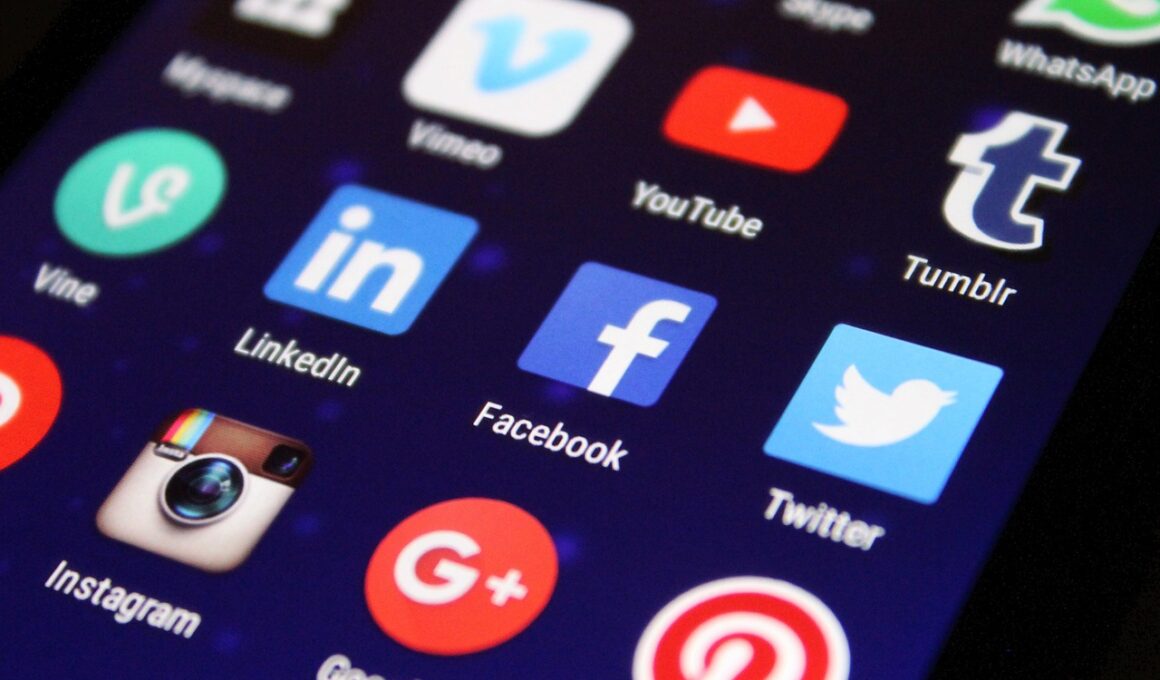The Science Behind Gamification and Social Media Engagement in 2024
Gamification is a strategic approach increasingly integrated into social media marketing to drive engagement and user interaction. By applying game-like elements in non-gaming contexts, brands achieve heightened customer loyalty. In 2024, we witness an evolution in these strategies, diverging from traditional techniques toward more immersive experiences. Key gamification elements include goals, challenges, and rewards. For instance, brands can introduce point systems or badges for users who consistently engage with their content or participate in campaigns. This makes users feel accomplished while increasing the brand’s visibility. Moreover, social media platforms now incorporate features that facilitate these gamified experiences seamlessly into the user interface. Increased interaction through quizzes, polls, and contests provides immediate gratification, allowing users to attain instant rewards. Furthermore, employing leaderboards fosters competition, encouraging users to participate more actively. As marketers refine these techniques, it is essential to understand audience preferences to customize gamification strategies accordingly. Ultimately, successful gamification enhances both brand loyalty and customer satisfaction, creating a win-win situation for brands and consumers alike. This paradigm shift in engagement undoubtedly positions gamification as a pivotal marketing strategy in the evolving social media landscape.
Incorporating gamification into social media campaigns also requires careful consideration of the target audience. Understanding demographics, interests, and behavioral patterns is crucial for crafting compelling gamification experiences. In 2024, brands that harness data analytics will gain an edge in creating personalized and relevant interactions. For example, a youth-oriented brand might design a mobile app that rewards users with discounts for completing specific challenges on social media. On the other hand, a professional service might opt for quizzes that educate users while offering incentives for sharing their results. Engaging users through gamified content increases the likelihood of organic reach as satisfied customers share their achievements with their networks. Furthermore, effective communication of gamified features is critical for success. Utilizing captivating visuals, infographics, and user-friendly interfaces will capture users’ attention. Brands may also leverage influencer partnerships to amplify the reach of their gamification initiatives. Employing renowned personalities can provide additional credibility and attract a larger audience. Ultimately, creating an engaging social media experience through gamification involves balancing excitement with valuable content, ensuring users feel connected to the brand’s mission and values, thereby enhancing overall engagement.
The Role of Rewards in Engagement
Rewards play a central role in gamified social media campaigns, and their effective implementation can dramatically enhance user engagement. In 2024, brands are expected to innovate in their reward structures, moving beyond mere discounts to include exclusive content, experiences, or social recognitions. These game elements create a sense of achievement, motivating users to continue their engagement. Additionally, brands should consider tiered reward systems to elevate excitement and challenge. For example, users could unlock progressively valuable rewards as they reach new levels of interaction. This sense of progression not only keeps users invested in the campaigns but encourages ongoing brand interaction. Furthermore, transparency is essential when communicating reward criteria; users should clearly understand what actions contribute toward earning rewards. Social media platforms increasingly support this approach with features that highlight user accomplishment visibly, like badges or points displayed on profiles. As a result, social proof is enhanced, making participation more appealing to potential users. Moreover, frequent and timely reward delivery contributes to maintaining momentum in user engagement. Recognizing efforts in real-time fosters a thriving, engaged community committed to the brand’s goals and objectives.
Measuring the success of gamification strategies is crucial for marketers aiming to optimize their social media campaigns. In 2024, brands are leveraging advanced analytics and performance metrics to track user engagement levels and retention rates closely. These insights are invaluable in refining gamification techniques, ensuring they resonate with audiences effectively. Social media platforms now provide enhanced analytics tools, helping brands understand how different elements contribute to user interaction. For instance, monitoring participation levels in a quiz versus a virtual scavenger hunt can expose trends in preferences among different demographics. Additionally, feedback mechanisms must be incorporated to gather user input on gamified experiences, facilitating real-time adjustments. Surveys and polls can provide qualitative insights, informing brands on which aspects of the gamification strategy resonate or require enhancement. Importantly, brands should analyze not only immediate user responses but also long-term loyalty and conversion rates. By connecting gamification strategies to measurable business outcomes, marketers can better justify their investments. As brands embrace an adaptable mindset, they also create richer and more personalized user experiences while simultaneously driving their overarching organizational objectives forward.
Integrating User-Generated Content Through Gamification
User-generated content (UGC) is invaluable in social media marketing and can be effectively integrated with gamification strategies. In 2024, brands are increasingly recognizing the importance of UGC in fostering community and enhancing engagement. By inviting users to contribute their content or experiences through gamified challenges, brands leverage the power of peer influence, encouraging participation and sharing. For instance, a photo contest where users submit images related to a brand or its product can yield authentic content that resonates with different audiences. Users feel more connected when they see their peers represented in brand communications. Moreover, consistent engagement through shared user content can enhance brand loyalty and trust over time. Incorporating gamification into UGC initiatives should focus on rewarding submissions that exhibit creativity or originality, as this motivates users to participate more actively. Utilizing social media tools that allow for easy sharing of UGC ensures that these campaigns reach wider audiences. Additionally, featuring selected user content prominently on brand channels serves to acknowledge the contributors. This visibility amplifies the impact of gamification while reinforcing community ties, ultimately leading to sustained engagement and loyalty toward the brand.
As the landscape of social media evolves, the intersection of gamification and emerging technologies marks a significant shift in campaign strategies. In 2024, augmented reality (AR) and virtual reality (VR) technologies offer innovative ways for brands to gamify interactions, providing new dimensions to social media campaigns. For example, an AR campaign could allow users to participate in virtual treasure hunts related to products, bridging the gap between digital interactions and tangible experiences. Users can enjoy a more immersive experience, which increasingly encourages participation and sharing. Additionally, implementing artificial intelligence (AI) into gamified strategies personalizes user experiences through adaptive challenges that respond to individual preferences and behavior. This tailored approach increases engagement and satisfaction, leading to enhanced long-term loyalty. Moreover, blockchain technology can offer transparency in reward distribution through tokenization, ensuring users feel secure in their incentives. Brands that are willing to experiment with these technologies are likely to stay ahead of competitors in the rapidly changing ecosystem of social media. By integrating innovative tech, marketers can create engaging, memorable campaigns that resonate deeply, fostering stronger relationships between users and brands in the process.
Looking Ahead: Future of Gamification
As we delve into 2024, the potential of gamification in social media campaigns continues to unfold. Marketers are increasingly aware of the power of storytelling integrated within gamification frameworks to form emotional connections with the audience. By weaving narratives into challenges and rewards, brands can engage users on a deeper level, enhancing their overall experience. For instance, a storyline that accompanies a scavenger hunt could evoke excitement, urgency, and community spirit, motivating participants to engage fully. Furthermore, ethical considerations are paramount as gamification evolves, especially regarding data privacy and user consent. Brands must ensure that their gamification practices align with ethical standards, prioritizing user data security. Additionally, transparency surrounding gamified systems is increasingly essential in maintaining trust and fostering long-term relationships. In the coming years, brands will need to be proactive in embracing feedback from their audiences, exhibiting a willingness to evolve their strategies iteratively. As gamification becomes an integral component of social media marketing, those who dare to innovate and adapt will thrive in the competitive landscape, cultivating engaged communities of loyal users who resonate with their brand vision.
.jpg” alt=”Gamification in Social Media”/>


